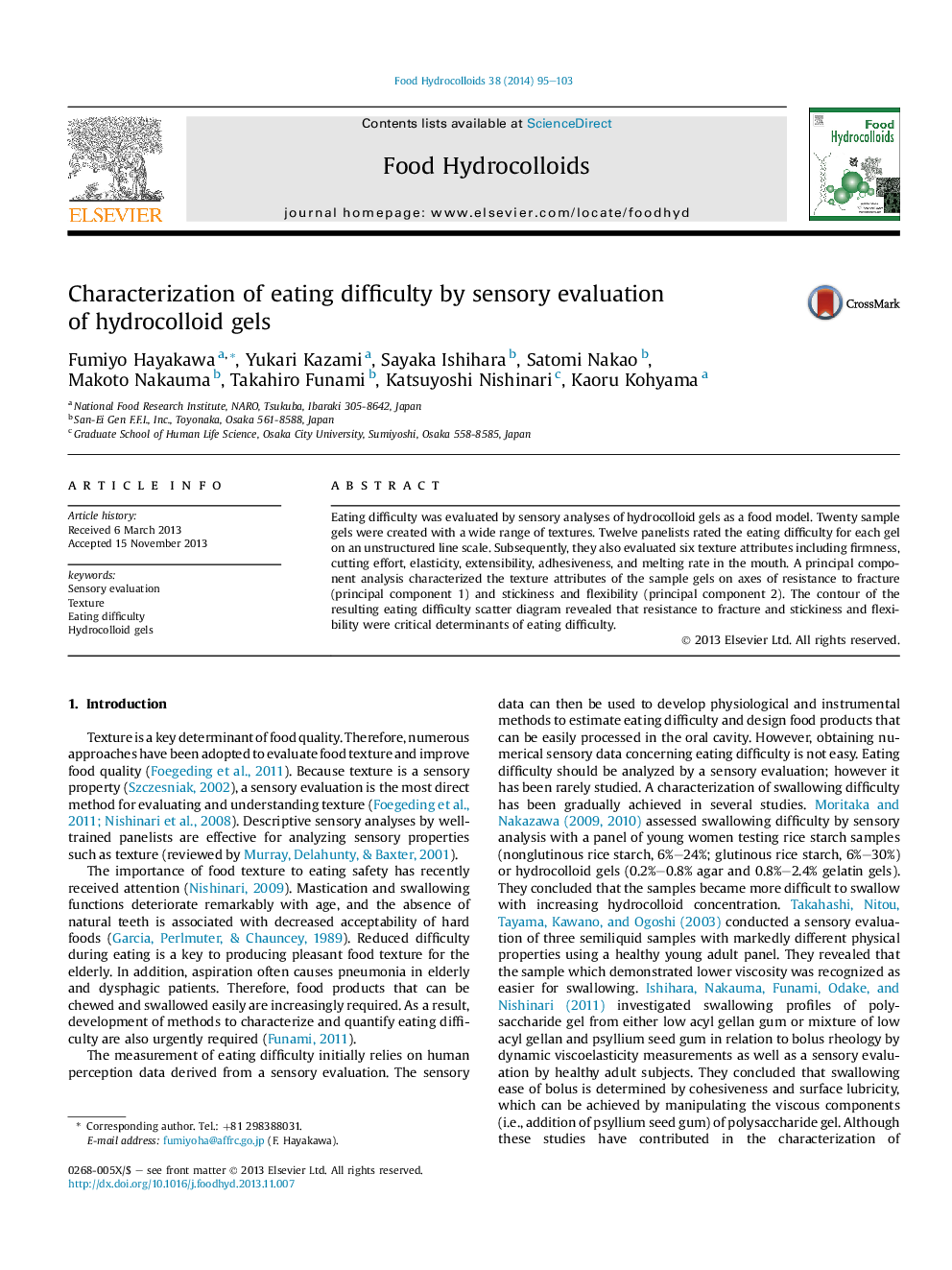| Article ID | Journal | Published Year | Pages | File Type |
|---|---|---|---|---|
| 604500 | Food Hydrocolloids | 2014 | 9 Pages |
•Twenty hydrocolloid gels with a wide range of mechanical properties were prepared.•Eating difficulty was quantified using sensory evaluations on an unstructured line scale.•Resistance to fracture and stickiness and flexibility were critical determinants of eating difficulty.
Eating difficulty was evaluated by sensory analyses of hydrocolloid gels as a food model. Twenty sample gels were created with a wide range of textures. Twelve panelists rated the eating difficulty for each gel on an unstructured line scale. Subsequently, they also evaluated six texture attributes including firmness, cutting effort, elasticity, extensibility, adhesiveness, and melting rate in the mouth. A principal component analysis characterized the texture attributes of the sample gels on axes of resistance to fracture (principal component 1) and stickiness and flexibility (principal component 2). The contour of the resulting eating difficulty scatter diagram revealed that resistance to fracture and stickiness and flexibility were critical determinants of eating difficulty.
Graphical abstractFigure optionsDownload full-size imageDownload as PowerPoint slide
